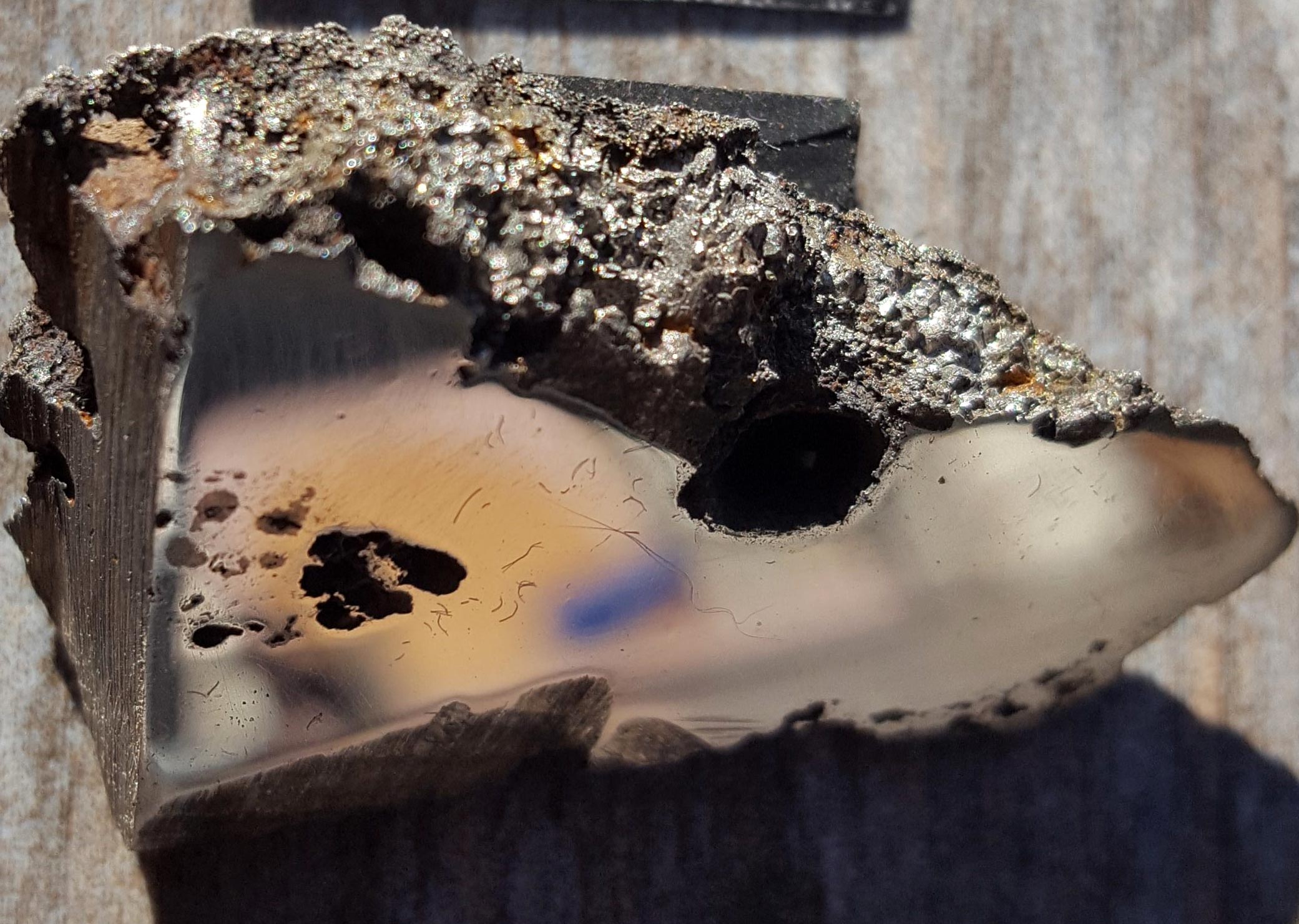
Una porción del meteorito El Ali, ahora alojado en la Colección de Meteoritos de la Universidad de Alberta, contiene dos minerales nunca antes vistos en la Tierra. Crédito: Universidad de Alberta
Nuevos minerales descubiertos en meteoritos masivos podrían revelar pistas sobre la formación de asteroides.
Un equipo de investigadores descubrió al menos dos nuevos minerales nunca antes vistos en la Tierra en un meteorito de 33,000 libras (15,000 kg) encontrado en Somalia en 2020. Este meteorito gigante es el noveno más grande jamás encontrado.
“Cada vez que encuentras un nuevo mineral, significa que las condiciones geológicas reales, la química de la roca, eran diferentes a las que se encontraban antes”, dice Chris Herd, profesor del Departamento de Ciencias Atmosféricas y de la Tierra y curador de la Colección de la Universidad. Meteoritos de Alberta. “Eso es lo que hace que esto sea emocionante: en este meteorito en particular, hay dos minerales oficialmente descritos que son nuevos para la ciencia”.
Un solo trozo de 70 gramos del meteorito se envió a la Universidad de Alberta para su clasificación, donde se descubrieron los dos minerales. Ya parece haber un tercer mineral potencial bajo consideración. Herd señala que si los investigadores obtuvieran más muestras del meteorito masivo, existe la posibilidad de que se encuentren aún más minerales.
Los dos minerales recién descubiertos se denominaron elaliita y elkinstantonita. El primer nombre, elaliite, proviene del propio meteorito, que oficialmente se llama “El Alí” meteorito porque se encontró cerca de la ciudad de El Ali en la región de Hiiraan en Somalia. Herd nombró al segundo mineral de elkinstantonita en honor a Lindy Elkins-Tanton, vicepresidenta de la Iniciativa Interplanetaria de ASU, profesora de la Escuela de Exploración de la Tierra y el Espacio de la Universidad Estatal de Arizona e investigadora principal de la[{” attribute=””>NASA’s upcoming Psyche mission.

A slice of the El Ali meteorite contains two minerals never before seen on Earth. Credit: University of Alberta
“Lindy has done a lot of work on how the cores of planets form, how these iron-nickel cores form, and the closest analogue we have are iron meteorites. So it made sense to name a mineral after her and recognize her contributions to science,” Herd explains.
In collaboration with researchers at the University of California, Los Angeles (UCLA) and the California Institute of Technology (Caltech), Herd classified the El Ali meteorite as an “Iron, IAB complex” meteorite, one of over 350 in that particular category.
As Herd was analyzing the meteorite to classify it, he saw something that caught his attention. He brought in the expertise of Andrew Locock, head of the University of Alberta’s Electron Microprobe Laboratory, who has been involved in other new mineral descriptions including Heamanite-(Ce).
“The very first day he did some analyses, he said, ‘You’ve got at least two new minerals in there,’” says Herd. “That was phenomenal. Most of the time it takes a lot more work than that to say there’s a new mineral.”
Locock’s rapid identification was possible because the two minerals had been synthetically created before, so he was able to match the composition of the newly discovered natural minerals with their human-made counterparts.
Scientists are still examining the minerals in detail to determine what they can tell us about the conditions in the meteorite when it formed.
“That’s my expertise — how you tease out the geologic processes and the geologic history of the asteroid this rock was once part of,” says Herd. “I never thought I’d be involved in describing brand new minerals just by virtue of working on a meteorite.”
Herd also notes that any new mineral discoveries could possibly yield exciting new uses down the line.
“Whenever there’s a new material that’s known, material scientists are interested too because of the potential uses in a wide range of things in society.”
While the future of the meteorite remains uncertain, Herd says the researchers have received news that it appears to have been moved to China in search of a potential buyer. It remains to be seen whether additional samples will be available for scientific purposes.
Herd described the findings at the Space Exploration Symposium on November 21 at the University of Alberta’s ETLC Solarium.

“Creador malvado. Estudiante. Jugador apasionado. Nerd incondicional de las redes sociales. Adicto a la música”.





